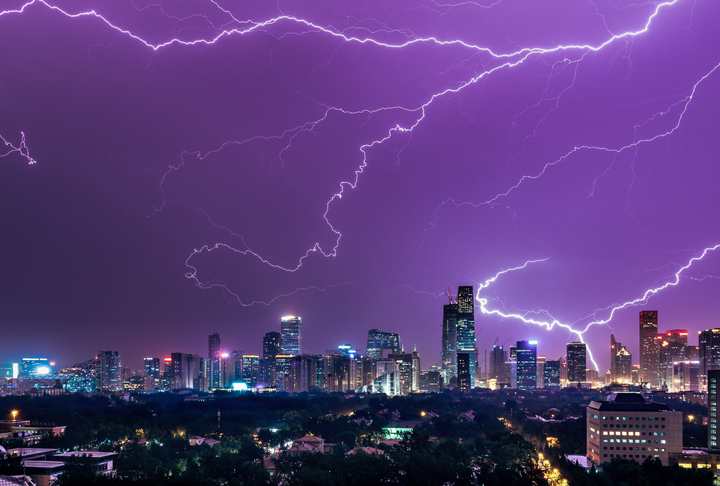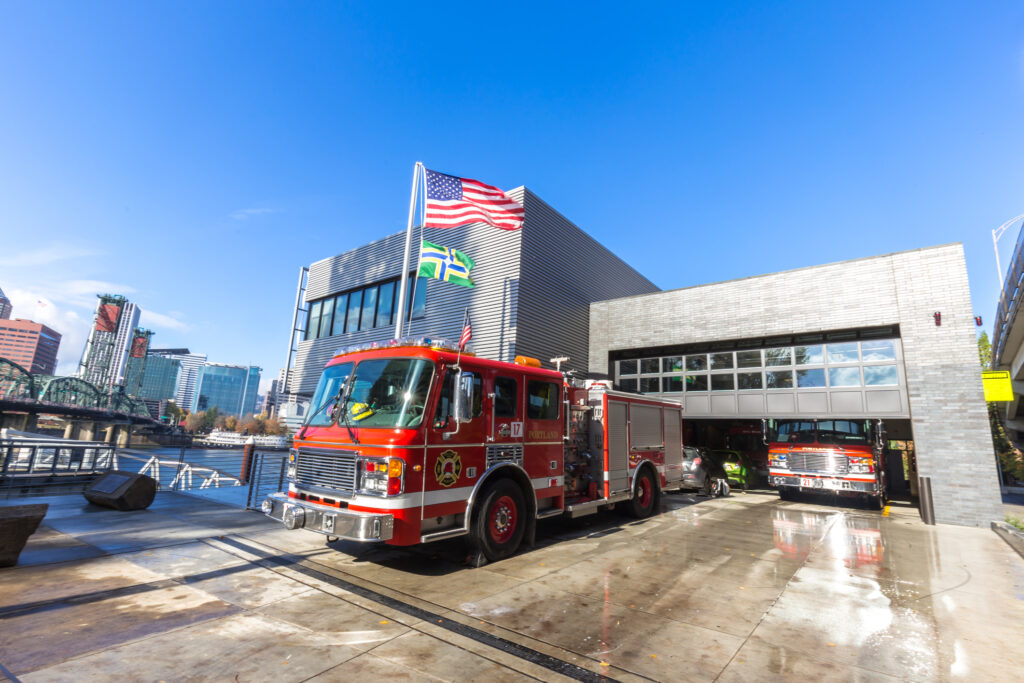
By Kelley Collins, Director of Business Development and Communications, Lightning Protection Institute
We rely on critical facilities not only in our day-to-day lives but also during emergencies and natural disasters. As defined by government agencies, such as FEMA, critical facilities include fire stations, police stations, hospitals, and emergency operation centers, among others. But here’s the question: Are these essential facilities in your community adequately protected from the destructive impact of lightning?
The Impact of Lightning on Structures
Lightning, though less publicized than other weather events, is equally destructive and must be understood so we can take preventive measures. Lightning strikes happen continuously, with approximately 100 strikes per second globally. Each strike unleashes a tremendous amount of electricity, with millions of volts and temperatures soaring higher than the surface of the sun. When a structure is struck, the surge of electricity travels through its pipes, electrical systems, and infrastructure. While lightning often causes fires, the less visible damage can be just as severe. Computers, communication devices, security systems, and other critical electronics can be rendered useless, leading to loss of data, revenue, and the ability to provide vital services.

A single lightning strike can have devastating effects on individuals, homes, businesses, and entire communities, including critical facilities. A lightning strike to a critical facility can prevent essential services, such as emergency response or medical care, from being available when they are needed most. A well-designed and properly installed lightning protection system can prevent these consequences.
Whether you are a homeowner, business owner, or part of the design and construction industry, it’s essential to understand the impact of lightning and the steps necessary to mitigate the risk. The Lightning Protection Institute has started to advocate for stronger regulations for critical facilities, particularly in high-risk areas where the potential for lightning strikes is greater.
The Need for Regulatory Requirements
Despite the constant threat of lightning, regulatory requirements for lightning protection systems in critical facilities remain minimal. A historical look at other life safety actions could give us the foundation to protect critical facilities from lightning, which we know can create fires.
When looking to safeguard individuals and buildings from fire, fire alarms and sprinkler systems have been implemented. Fire alarms alert individuals of smoke and/or fire to ensure that they exit the building. Sprinkler systems were designed to minimize the spread of a fire and damage to the structure. Depending on states, either or both, fire alarms and sprinkler systems are required in commercial properties and/or homes.
Just as fire alarms and sprinkler systems are mandated to prevent building destruction and protect lives, lightning protection systems should be required for the same reasons. Lightning protection systems protect both lives and structures.
There are government documents that outline what is considered a critical facility and what structures are encompassed in our critical infrastructure. In addition, these federal agencies clearly see the need for higher standards in critical facilities and critical infrastructures due to their guidelines for protecting against potential flooding. Yet, there is not a mandate to protect either facilities or infrastructure from lightning strikes.
Lightning: Second Only to Floods
Lightning is the second most damaging natural hazard after floods, impacting both individuals and communities. The same level of consideration given to flood prevention should apply to mitigating the risks of lightning. Installing lightning protection systems in critical facilities ensures these buildings remain operational during and after a strike, safeguarding the community.
Introducing regulatory requirements for lightning protection in high-risk areas would ensure that critical facilities continue to function during emergencies, providing vital services when they are needed most.
Conclusion: Lightning Deserves Our Attention
With the potential for destruction that lightning carries, it deserves as much attention as hurricanes, floods, and fires, which often dominate the headlines. We’ve taken significant steps to prepare for and protect against these natural disasters through regulations and personal actions.
The design and construction industries continue to innovate with new materials and techniques to increase the safety of individuals and communities when building new structures. Fire alarms and earthquake-resistant buildings are now standard safety measures, and hurricane-resilient homes are being built with new designs. These advancements result from collaboration across industries.
The next collaboration should be the initiative to protect communities from the impact of a lightning strike. This initiative involves implementing regulatory measures for lightning protection systems to safeguard critical facilities. Lightning protection systems intercept a lightning strike and safely disperse the energy along the conductors to ground. When properly installed by certified lightning protection contractors, these systems are scientifically proven to mitigate risks for homes, businesses, and critical facilities and infrastructure.
Several industries have the opportunity to provide their insight and expertise to protect communities: Architects, Engineers, Insurance Providers, Risk Assessors, Weather Researchers, Local Governments as well as Lightning Protection Professionals. As experts in various fields, we can protect our communities by raising awareness of lightning risks and advocating for the installation of certified lightning protection systems.
The next time you pass by a fire station, police station, or hospital in your community, take a moment to look up. Is there a lightning protection system installed? It’s critical to ensure these essential facilities are protected, especially in high-risk areas, so they can continue serving individuals and communities during and after a storm.
Learn More:
Lightning-Related Claims Up Sharply in 2023
Assess, Measure, Mitigate Your Lightning Risk
Lightning: Quantifying a Complex, Costly Peril to Support Resilience
Beyond Fire: Triple-I Interview Unravels Lightning-Risk Complexity
Lightning Sparks More Than $1 Billion in Homeowners Claims Over Five Years

